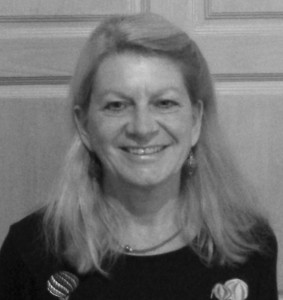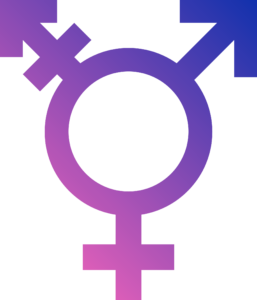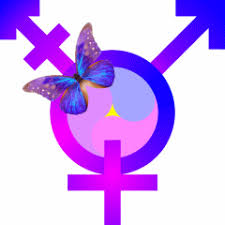19 October 2017
What is ‘Normal’?
Towards a post-gender age.
By Lynda Goetz
 ‘Normal’ is a word I have never really liked. Many use it without thought. According to the Oxford Dictionary definition, the primary meaning of the adjective is ‘conforming to a standard; usual, typical or expected’. As a noun, the second definition is ‘a person who is conventional and healthy’. For a start, whatever is ‘usual, typical or expected’ can differ quite dramatically depending on the society or time in which you are living and the geographic location in which you find yourself. What might be normal in India, for example, may not be normal in the US. What was ‘normal’ in the Middle Ages is not normal now. As for ‘conventional’, it always smacks rather of a lack of imagination and a degree of boringness. So, whose idea of ‘normal’ are we considering accepting if we start talking about a ‘post-gender Britain’ as John Humphries did in his report for the Today programme on Radio 4 this morning (Wednesday)?
‘Normal’ is a word I have never really liked. Many use it without thought. According to the Oxford Dictionary definition, the primary meaning of the adjective is ‘conforming to a standard; usual, typical or expected’. As a noun, the second definition is ‘a person who is conventional and healthy’. For a start, whatever is ‘usual, typical or expected’ can differ quite dramatically depending on the society or time in which you are living and the geographic location in which you find yourself. What might be normal in India, for example, may not be normal in the US. What was ‘normal’ in the Middle Ages is not normal now. As for ‘conventional’, it always smacks rather of a lack of imagination and a degree of boringness. So, whose idea of ‘normal’ are we considering accepting if we start talking about a ‘post-gender Britain’ as John Humphries did in his report for the Today programme on Radio 4 this morning (Wednesday)?
If Neil Macgregor, former director of the British Museum, thinks we are breaking new ground and trying to do something that no society has ever done in living without religious faith (see A Sense of Belonging) then how much more extraordinary, at first sight, is the idea of living in a world where ‘gender doesn’t matter’? Once again, we may need a definition here. ‘Gender’ is a new term – insofar as it refers to masculine or feminine characteristics. Fascinatingly, prior to the 1970s the word was almost exclusively used to refer to grammatical categories – so, for those who did Latin, Greek or German, the gender of a noun was masculine, feminine or neuter. No wonder, as the young journalist Laurence Dodds wrote in an article (Transgender Kids) last year, ‘There seems to be a bit of a generational divide on the transgender issue’. For anyone under twenty the whole gender thing seems to be just something they have grown up with. Today, the word ‘gender’ replaces the word ‘sex’ in many instances, particularly in some areas of social sciences, whereas elsewhere the distinction is made between biological sex and the social construct of gender as a role. The World Health Organisation (WHO) states, “‘sex’ refers to the biological and physiological characteristics that define men and women’ and “’gender’ refers to the socially constructed roles, behaviours, activities and attributes that a given society considers appropriate for men and women”. Already, it is clear we are entering complicated territory.
 ‘Intersex’ is a medical term which covers a person born with a number of male and female biological, hormonal or chromosomal markers which make it difficult to put them into the categories of male or female. A ‘transgender’ person on the other hand, has none of the ambiguities in biological sex characteristics, but their ‘self-identified gender does not match the legal sex assigned at birth’. Once one starts looking for information, it is hard to know where to draw the line. Over the last few years particularly, the cascade of writing, statistics and programmes on the subject has become something of a waterfall. Back in July, Justine Greening instigated a consultation to amend the 2004 Gender Recognition Act, which she described as ‘at the cutting edge in its time’. It is, as Mathew D’Ancona wrote in his article on the subject in The Guardian in July (Transgender Debate), ‘a simple fact that ‘gender fluidity’ is on the rise’. The Commons equalities commission has said that the process whereby a trans person changes their gender should be ‘de-medicalised’, which, once one has understood the distinction between biological sex and gender would appear to make a lot of sense.
‘Intersex’ is a medical term which covers a person born with a number of male and female biological, hormonal or chromosomal markers which make it difficult to put them into the categories of male or female. A ‘transgender’ person on the other hand, has none of the ambiguities in biological sex characteristics, but their ‘self-identified gender does not match the legal sex assigned at birth’. Once one starts looking for information, it is hard to know where to draw the line. Over the last few years particularly, the cascade of writing, statistics and programmes on the subject has become something of a waterfall. Back in July, Justine Greening instigated a consultation to amend the 2004 Gender Recognition Act, which she described as ‘at the cutting edge in its time’. It is, as Mathew D’Ancona wrote in his article on the subject in The Guardian in July (Transgender Debate), ‘a simple fact that ‘gender fluidity’ is on the rise’. The Commons equalities commission has said that the process whereby a trans person changes their gender should be ‘de-medicalised’, which, once one has understood the distinction between biological sex and gender would appear to make a lot of sense.
Currently, under the 2004 Act, a person needs to be diagnosed with gender dysphoria, defined as ‘the distress experienced by a person as the result of the sex and gender they were assigned at birth’, in order to change gender legally and obtain a Gender Recognition Certificate. However, according to the first of John Humphries interviewees this morning, a transwoman, who prefers simply to call herself a woman, ‘no-one would ever ask for it anyway’. If gender is indeed simply a social construct, then wasting precious NHS resources as well as the additional costs of the judicial Gender Recognition Panel seems unreasonable. What is to stop anyone who ‘identifies as female’ from simply living as a female? Less and less it would seem. Only a few weeks ago, Murray Edwards College, formerly known as New Hall and an all-female college, announced that it was changing its admission policy to allow it to accept transgender students who identify as female. Lucy Cavendish College is expected to follow suit. The feminist Germaine Greer, described the decision as ‘ridiculous’, telling The Telegraph that “If [Murray Edwards] really don’t believe that gender is binary, then they really shouldn’t be a single sex college… The only sane thing for them to do is to cease discriminating on the basis of assigned gender of any kind”.
The Tavistock Clinic, referred to both in the Today programme and in Laurence Dodds’ article is the one clinic in this country which treats children with gender dysphoria and much concern has been expressed around this. Should we however as Mr Dodds suggests stop ‘freaking out’ about this and accept that concerns are largely misinformed and that if ‘a few thousand young people out of a population of more than 60 million submit themselves to detailed examination and assessment, at the end of which they might decide that transition is for them – well, I’m not sure it should worry anyone.”
In South Asia the Hijra are recognised as a third gender by some governments, including India, where since 2014 they have had an option on passports and certain official documents. The Kathoeys of Thailand (usually translated as ‘ladyboys’) are also more visible and more accepted than transgender people in other countries, although the term itself may be considered pejorative. Legal recognition however is non-existent, even where they have had gender re-assignment surgery. Problems also arise as regards access to amenities.
 It is this area that is perhaps going to need the most sensitive handling. As several women have pointed out in relation to the Cambridge college issue, many women are going to feel unhappy about the idea of their private spaces being invaded by biological males. What about hospital wards, prisons, changing rooms? The LGBTIQ lobby is angry and vociferous like many minorities. Change has happened very fast both as a result of an increasingly liberalised society, but also undoubtedly because of the medical advances that have been made since Einar Wegener, the artist became Lili Elbe (the life that was fictionalised in The Danish Girl) in the early decades of the 20th C.
It is this area that is perhaps going to need the most sensitive handling. As several women have pointed out in relation to the Cambridge college issue, many women are going to feel unhappy about the idea of their private spaces being invaded by biological males. What about hospital wards, prisons, changing rooms? The LGBTIQ lobby is angry and vociferous like many minorities. Change has happened very fast both as a result of an increasingly liberalised society, but also undoubtedly because of the medical advances that have been made since Einar Wegener, the artist became Lili Elbe (the life that was fictionalised in The Danish Girl) in the early decades of the 20th C.
The majority of the population are happy with their assigned sex and gender. However, in this post-modern world, there is even a term to use for that majority – cisgender. Cisgender derives from the Latin preposition cis-, meaning “on this side of”, being the opposite of trans-, meaning “across from” or “on the other side of. Quite why such a term is necessary is probably unclear to most of us, but as we hurtle towards a future where cochlear implants are only the start and we might well have some sort of cyberware implant, gender may very well become totally immaterial.
If you enjoyed this article please share it using the buttons above.
Please click here if you would like a weekly email on publication of the ShawSheet

